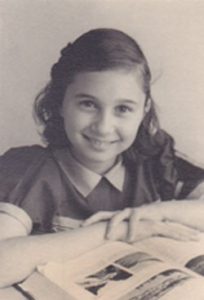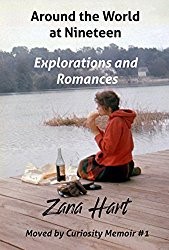“If it’s got a dead body in it, it’s a mystery”, spoken by a librarian.
“If it’s got a detective in it, it’s a mystery”, responded another librarian.
Not so these days.
The distinction from one genre to another – suspense, thriller, crime fiction, and “cozy” – can be confusing to almost any book browser. As examples, Karin Slaughter ‘s books feature characters from the Georgia Bureau of Investigation and Tess Gerritson’s books have Rizzoli and Isles, and both of these authors are found in the fiction section.
Included in this (mystery?) genre are crime fiction, suspense, and thrillers – often in the fiction section – where altogether, these books garner an estimated 730 million dollars in sales per year. They offer an almost infinite number of sub-categories with themes about cats, (Mew is for Murder) dogs, (The Sound and the Furry), pastries, (Scones and Scoundrels) knitting, lighthouses, antiques, archaeology, (The Pot Thief who Studied Pythagorus), and even fly fishing. The Silver City Public Library has a total of 4086 mystery titles alone.
To simplify, thrillers focus on the fear, doubt and dread of the hero/heroine because a devastating crime is about to be committed, or has been committed, with an even worse one in the wings. These usually fall into the category of fiction.
In a mystery, a crime is committed – almost always a murder – and the action of the story is the solution of the crime.
Lately we’ve seen a growing popularity in the cozy mystery, which is characterized by an engaging protagonist such as Miss Marple or Kinsey Milhone.
Puzzling through what makes a mystery leads us to the next question:
WHAT MAKES A LIBRARIAN?
Rosanna “ Zana” Hart, a Silver City resident, former librarian and author of 2 memoirs and 3 cozy mysteries, says that “by nature” she became a librarian. First, because of her love of books, and secondly because it allowed her to be a person of service.
She states that “Once a librarian, always a librarian,” because a librarian’s sense of public service never ends. A librarian asks throughout his/her work life, “May I help you find something?” It is so ingrained in Zana that she finds herself asking this even when she’s shopping in the grocery store.
She believes that those of us who are readers are “marked.” As a child, she found that her life was larger than that of her friends who did not read, like the incurious characters in Thomas Wolfe’s novels, Look Homeward Angel and You Can’t Go Home Again, who live in a village surrounded by mountains and never wonder what life is like on the other side. Are readers the curious ones who wonder and imagine life of a different kind? Zana comments, “Readers live in so many different worlds …. that’s why I call us marked. Librarians definitely fall into this category. It’s easy for us to keep abreast of what’s going on in the book world.”
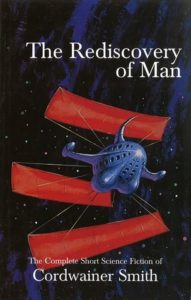 Zana doesn’t remember ever not being able to read. Her first memory of reading was at age six, sitting on her grandparent’s wicker love seat and reading Wind in the Willows. Both of her parents were writers. Zana’s mother wrote engineering texts for the US Navy and at home she wrote fiction and poetry. Her father, a well know Asian scholar in D.C., at the School of Advanced International Studies, was also a science fiction writer who used the pseudonym Cordwainer Smith.
Zana doesn’t remember ever not being able to read. Her first memory of reading was at age six, sitting on her grandparent’s wicker love seat and reading Wind in the Willows. Both of her parents were writers. Zana’s mother wrote engineering texts for the US Navy and at home she wrote fiction and poetry. Her father, a well know Asian scholar in D.C., at the School of Advanced International Studies, was also a science fiction writer who used the pseudonym Cordwainer Smith.
At age 8, Zana began reading a dog series from her local library. They were Lad: A Dog and other Collie stories, written by Payson Terhume (1872-1942) (Not to be confused with the Lassie stories that were written during the same time period.)
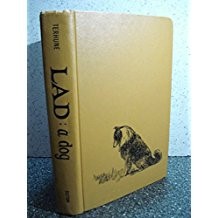 When she was in high school, Zana had a summer job in research that encouraged students to become scientists. They worked on the question of how many people the world could feed. Several times she went to the Library of Congress to find information about grain yields and population figures. In those days, a person had to go through a card catalog and fill out a request slip for the library staff to find the information. But she was able to go into the stacks and go up and down on little elevators to dig through numerous books full of data. She thinks that the feeling of being an insider might have influenced her decision to become a librarian.
When she was in high school, Zana had a summer job in research that encouraged students to become scientists. They worked on the question of how many people the world could feed. Several times she went to the Library of Congress to find information about grain yields and population figures. In those days, a person had to go through a card catalog and fill out a request slip for the library staff to find the information. But she was able to go into the stacks and go up and down on little elevators to dig through numerous books full of data. She thinks that the feeling of being an insider might have influenced her decision to become a librarian.
After graduating from Stanford with a degree in Anthropology, she did extensive traveling. Her first memoir is titled, Around the World at 19. Included in this memoir are color photographs of the people and places she visited. Later, when she returned to the States, she attended UC Berkeley for her Master’s in Library Science. She then worked in 5 libraries, as a Children’s Librarian Director, Reference Librarian, Branch Head, and Board Member. She continued to travel, visited 22 countries, found romance, raised llamas and became interested in dog training.
Of the many questions a librarian is asked, Zana remembers, “How many babies can a black widow spider make at one time?”, “Where can I find a book about cyanide?”, and “Who won the Kentucky Derby is 1960?”. Zana found no topic she was unwilling to discuss. This is clearly consistent with the American Library’s Association Bill of Rights that states:
“Books and other library resources should be provided for the interest, information, and enlightenment of all people of the community the library serves. Materials should not be excluded because of origin, background, or views of those contributing to their creation.”
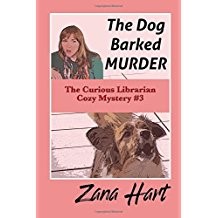 At age 70, her bucket list included writing the 3 cozy mysteries, known as The Curious Librarian Mysteries. They take place in a small fictional town of about 10,000 people named Silvermine, Colorado. The titles include, Dead in the Stacks, Bad Weather, Bad Men, and The Dog Barked MURDER. Her sheltie-mix dog, Nicky, is on the cover of this last book.
At age 70, her bucket list included writing the 3 cozy mysteries, known as The Curious Librarian Mysteries. They take place in a small fictional town of about 10,000 people named Silvermine, Colorado. The titles include, Dead in the Stacks, Bad Weather, Bad Men, and The Dog Barked MURDER. Her sheltie-mix dog, Nicky, is on the cover of this last book.
Her explanation of a cozy mystery is one where “Who did it?” is the main puzzle while the writer throws out enticing hints to lead the reader on. She has donated these books to the Silver City Public Library.
Zana describes the Silver City Public Library as spacious with a friendly staff and where she has access to almost all the books she wants to read, whether on the shelf or through ebooks. Her primary interest in reading is in non-fiction. Lately she has checked out H is for Hawk by Helen Mcdonald and At Home: A Short History of Private Life by Bill Bryson.

